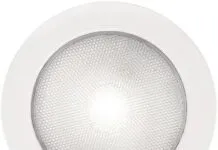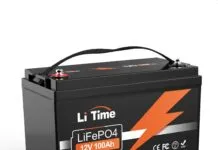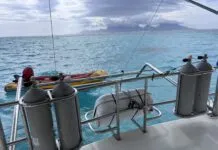Home Search
pumps - search results
If you're not happy with the results, please do another search
Plastic Tank Report
The leading cause of death of metal tanks, on land and at sea, is corrosion. Industry standards for fuel tank farms require internal inspections starting at 15 years, and as a licensed API tank inspector, our Tech Editor Drew Frye knows well why these interior inspections are required.
Are Copper, Zinc, and Brass Mucking Up Our Fuel?
Something we have long noticed at PS is that gasoline and diesel control samples in our aging and corrosion studies never really age much. Only when the samples include metal samples do they generate gum and discolor. One explanation is refinery stability treatments, but the primary difference is that copper and zinc ions are powerful catalysts for polymerization. Shore-side fuel storage systems do not experience this type of break down because copper tubing, brass fittings and galvanized pipe are forbidden by code . The following requirements are quoted from standards groups and OEMs.
Winter Maintenance
For many of us, the falling of leaves marks the end of the sailing season. The boat is winterized for the season and our minds shift gears, away from sailing. As the new year comes, we catalog the winter projects we had intended to tackle. Bottom paint, of course. Fresh varnish may be needed inside and out. Deck fittings need re-bedding.
Albin Vega
Like a lot of people, our first recollection of the Albin Vega was an advertisement in the sailing magazines. In the early 1970s, a time when California production coastal cruisers dominated the American market, this little Swedish import was hyped as a serious offshore cruiser.
Beneteau Oceanis 350
Beneteau is the largest builder of sailboats in the world. The French company has made its mark not only in Europe, but in the U.S. as well, opening some years ago a plant in Marion, South Carolina, with headquarters in Charlotte, North Carolina. Probably more than any other company, Beneteau also has influenced sailboat styling--the so-called Euro-style, typified by smoked wrap-around windows, scoop transoms with molded-in steps, and lots of curvy interior shapes. The Oceanis 350, built between 1986 and 1993, is a reasonable example of Beneteau's impact on the sailboat market. About 144 were built in the US, more in Europe.
Brewer 12.8/44
The Brewer 12.8 and the Brewer 44 are developments of the Whitby 42, a cruising boat from the board of Ted Brewer. Brewer is one of the great modern cruising boat designers. His boats are well-mannered, attractive and practical. To improve windward performance, a high aspect ratio centerboard extends through the bottom of the 12.8's shallow keel. Since the board is not ballasted, it does not affect stability, but can be used when reaching to shift the center of lateral resistance.
Cal 31
The Cal 31 is the thirteenth Bill Lapworth-designed Cal boat between 27' and 34' built by the Costa Mesa, California firm. Cal, a pioneer in fiberglass sailboat construction, later became a division of Bangor Punta Marine, whose boatbuilding group also included O'Day and Ranger. Cal boats went out of production in 1989. Cal and Bill Lapworth are best known for the breakthrough Cal 40, which many years ago began the trend toward moderately light displacement, fin-keel spade-rudder ocean racers.
Catalina 34
It doesn't take a lot of brains to see that Catalina is doing something right that a lot of other sailboat makers aren't. They're the largest sailboat builder in the country, and a terrible year for them would be Valhalla for almost every other manufacturer. With more than 1,000 built in seven years, the Catalina 34 has to be in the running as the most successful production boat of the 1980s.
C & C Landfall 38
Unlike other C&Cs, whose interior and deck layouts are designed for racing as well as cruising, the Landfalls are geared toward cruising, with more comfort, a slightly higher degree of finish detail, and deck layout concessions to the cruising couple.
Cheoy Lee Clipper 36/42
Cheoy Lee Shipyards of Hong Kong is one of the first molders of fiberglass boats in Asia. The Cheoy Lee Clipper 36 was built from 1969 to about 1988, if the BUC Research Used Boat Price Guide is to be believed. The Clipper 42 was introduced a year later, in 1970. Eventually both were replaced by the more contemporary designs of David Pedrick. We doubt that very many Clipper series boats were brought into the U.S. during the mid or later 1980s.



































